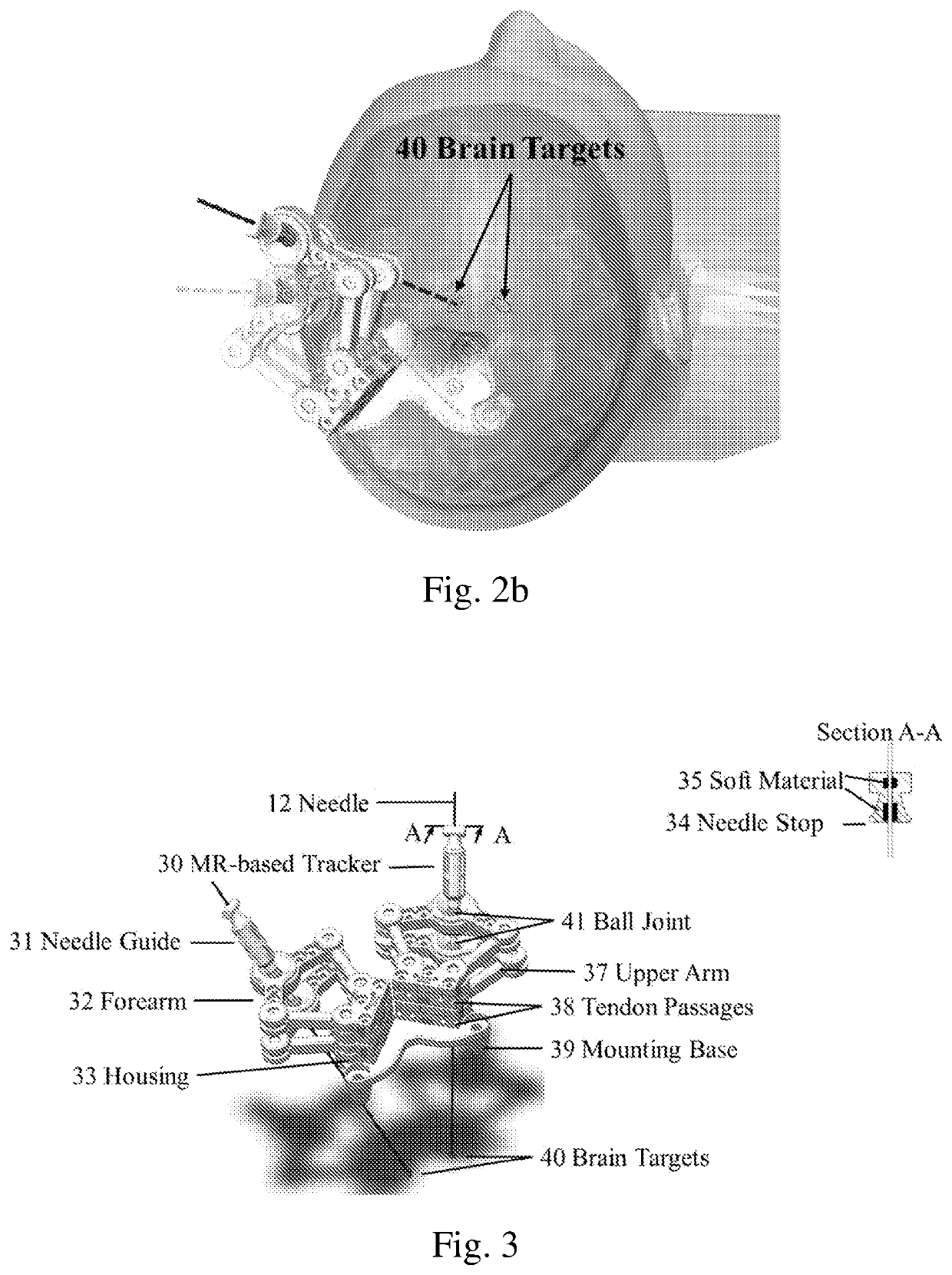Robotic stereotactic system for mri-guided neurosurgery
a robotic and stereotactic technology, applied in the field of medical robots, can solve the problems of low technique performance, and achieve the effect of high precision, not inducing noticeable image artifacts, and determining the safety and efficacy of stereotactic procedur
- Summary
- Abstract
- Description
- Claims
- Application Information
AI Technical Summary
Benefits of technology
Problems solved by technology
Method used
Image
Examples
example 1
ion Stiffness
[0119]An iterative test was conducted on a 1 degree of freedom actuation. The upper arms of the manipulator were fixed such that rotation of the actuated joint was constrained. Ten meter pipes filled with distilled water were used to connect the master-to-slave hydraulic units. The master unit was actuated by an electrical DC motor that provided 500 encoding pulse feedback. The DC motor was also geared down in ration 14:1, generating rotary resolution of 0.052°. A torque sensor with 5 m / Nm sensitivity was used to measure the external load. The tests were under a bi-directional load. The transmission fluid in the pipes was preloaded at 0.5, 1.0, 1.5, and 2.0 bars in order to investigate the transmission stiffness varying with different fluid pressure levels. The external loads were gradually increased, while recording the corresponding piston displacements.
[0120]The force displacements diagram, as seen in FIG. 13, shows the increasing trend of transmission stiffness with...
example 2
rgeting Accuracy
[0121]An EM positional tracking system was used to measure the 3D coordinate of any point defined in the experimental setup. Ten points were simulated as the STN target, five in each side on a plastic plate. The points were roughly 100 mm below the lower layer manipulators. This is the typical depth of a stereotactic target beneath a skull. These measured target coordinates were registered with the robot coordinate system. Two EM tracking coils were attached to one robot forearm, one on each layer. A phantom needle with similar diameter to a DBS cannula was used in this targeting task. The exact needle tip position and orientation were calculated by two 5 degrees of freedom coils fixed at the needle's tip.
[0122]Configurations of the robot and needle guide, along with needle insertion depth, were measured and calculated. After aiming at the target points, the needle was inserted manually. The proximal distance from the needle tip to the target and the distance from th...
example 3
Tracking Test
[0123]The robot was mounted on a skull model and placed and scanned inside a head coil. To reveal the brain phantom in the MR image, a “brain” was fabricated from agar gel in order to enhance the image contrast for needle targeting. Two thin tracking coil films were first employed and embedded in the needle guide. 3D spoiled gradient recalled-echo (SPGR) sequence was used to assess the location and orientation of the needle guide. The sequence parameters are stated in Table 2.
TABLE 2MRI scan parametersw / o needle insertedw / needle insertedSNR testFOV(mm)240 × 240240 × 240280 × 280Matrix256 × 256256 × 256256 × 256AcquisitionFSPGRFSPGRT2-FSETR(ms)68.068.02000.0TE(ms)2.82.876.8Flip angle (°)101090
[0124]A phantom needle made of carbon fiber was then inserted and scanned with the same imaging sequence. FIG. 8b showed the signal intensities of the two coils were 1133.00 and 1341.00, in contrast to the two circular areas comprising 59 pixels, which were sample on the background ...
PUM
 Login to View More
Login to View More Abstract
Description
Claims
Application Information
 Login to View More
Login to View More - R&D
- Intellectual Property
- Life Sciences
- Materials
- Tech Scout
- Unparalleled Data Quality
- Higher Quality Content
- 60% Fewer Hallucinations
Browse by: Latest US Patents, China's latest patents, Technical Efficacy Thesaurus, Application Domain, Technology Topic, Popular Technical Reports.
© 2025 PatSnap. All rights reserved.Legal|Privacy policy|Modern Slavery Act Transparency Statement|Sitemap|About US| Contact US: help@patsnap.com



